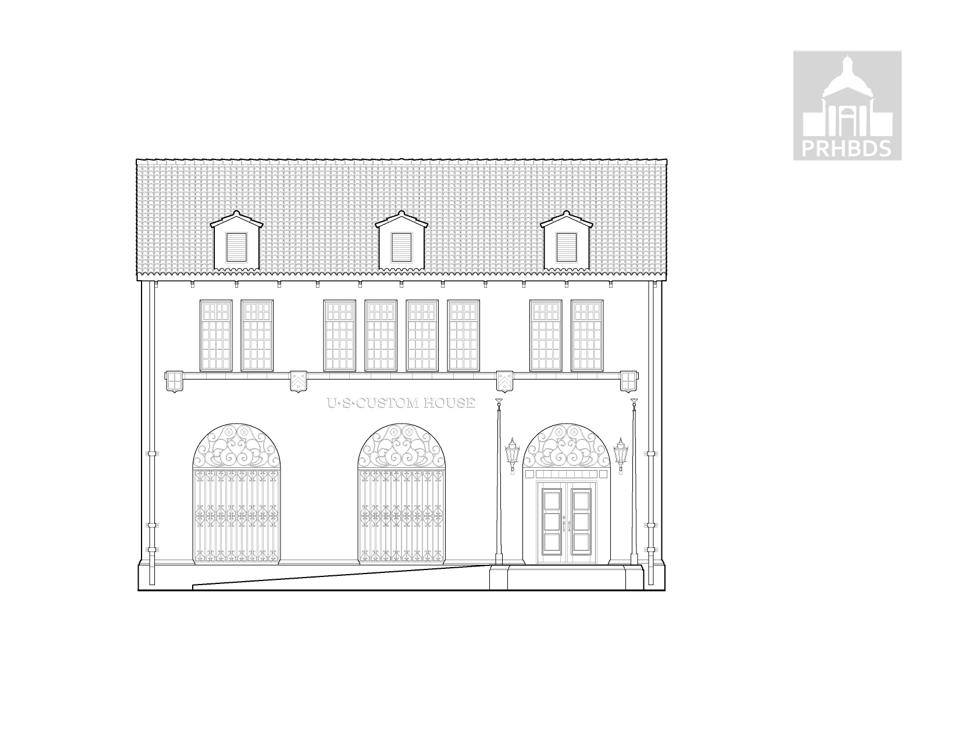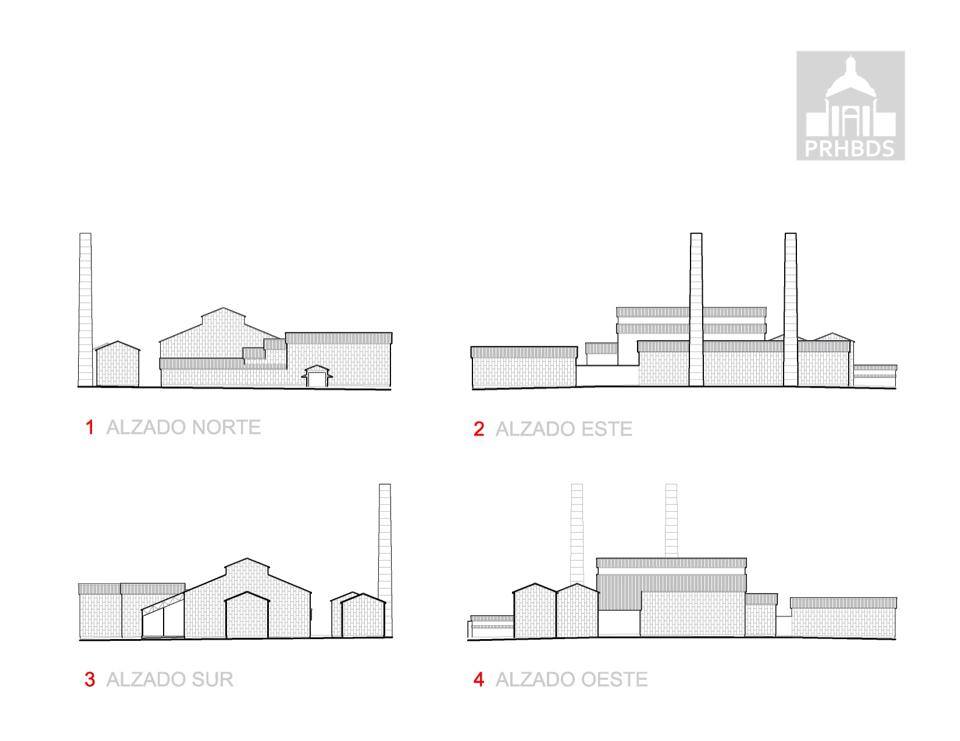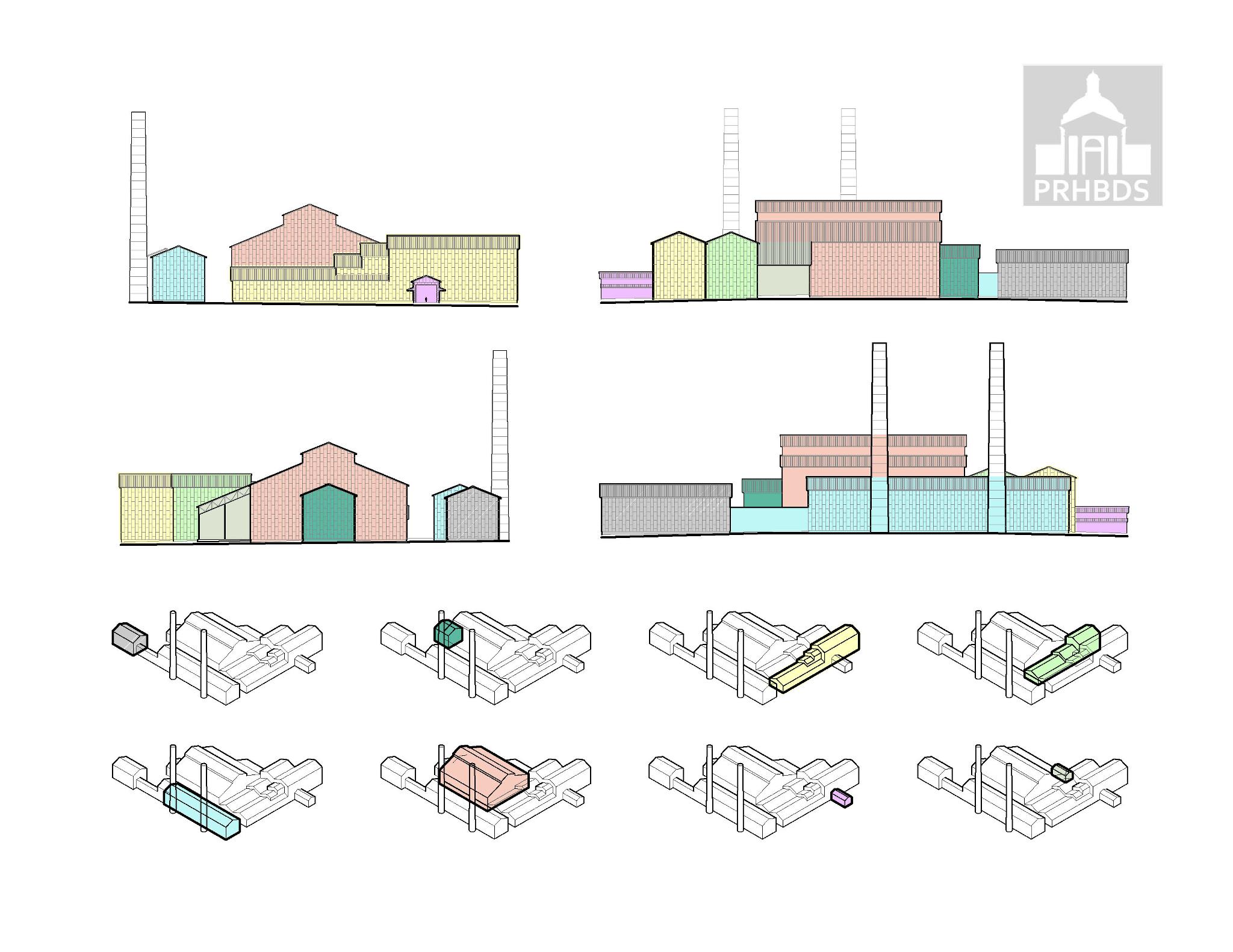
U.S. Custom House (Aduana de Fajardo) (1930)
Puerto Real
Fajardo, Puerto Rico
Diseñado por Albert B. Nichols
La Aduana de Fajardo, ubicada en Puerto Real, fue construida en 1930, en el frente marítimo aun no desarrollado, directamente sobre la playa. La Aduana de Fajardo es una estructura de 2 y media plantas, plano rectangular, en concreto armado y varilla con una ala posterior de una planta con terraza en la azotea, también de concreto.
Hoy día la primera y segunda planta del edificio son utilizados por el Servicio de Aduana federal y parte del primer piso por el Correo Federal. Se cree que parte del segundo piso fue utilizado originalmente como residencia por el Director de Aduana del Puerto, aunque los dibujos del arquitecto indican sólo usos oficinescos. La parte principal del edificio es de 33’ por 49’y el ala posterior de 16’6” por 49’. La fachada este consiste en tres naves con la entrada original en la nave que da hacia el norte. Cada una de las naves de la primera planta en las fachadas este y norte tiene una abertura en arco redondeado. Como parte de las extensas alteraciones hechas al edificio en 1975, se tapiaron dos de los arcos de la fachada este, excepto por una pequeña ventana central. Las dos aberturas en el norte izquierdo y centro retienen sus puertas y herrajes decorativos y detalles en terracota. Hay un cordón decorativo en terracota con cuatro blasones entre los pisos del lado este. En el segundo piso del lado este, las naves de los extremos tiene ventanas modernas y la central tiene una ventana metálica central y dos ventanas iguales a ambos lados, del 1975.
Las ventanas que dan al lado sur han sido sustituidas por bloques ornamentales de vidrio, aunque la puerta doble central se conserva. La fachada norte hacia la calle Unión termina tiene tres naves de ancho en el primer piso y dos en el segundo.
El edificio está en buen estado de conservación más sufrió alteraciones significativas en 1975, las cuales eliminaron algunos de los elementos arquitectónicos e incorporaron materiales y técnicas de construcción que no guradan relación histórica con el diseño original de la estructura. Estos cambios incluyen instalación de plafones acústicos, remoción de herrajes decorativos, tapiado de aberturas y reemplazo de las ventanas de madera por ventanas metálicas modernas.
HISTORIA
Fajardo fue utilizado como Puerto de entrada a la Isla al final del dominio español y a través de las primeras décadas de la administración de EEUU. En el periodo español una pequeña y sencilla estructura albergó una aduana en el mismo lugar.
A pesar de que la Aduana de Fajardo es la menos imponente de las Aduanas incluidas en como conjunto en el Registro Nacional de Sitios Históricos de EEUU (Aduanas de San Juan, Mayagüez, Ponce y Fajardo) es arquitectónicamente más importante que las ubicadas en Arecibo, Arroyo y Aguadilla, que fueron construidas durante el mismo periodo pero no pertenecen ya al Servicio de Aduana de EEUU.
Su estilo Resurgimiento Español va a tono con sombrío panorama económico de la fecha de su construcción (1930), y el edificio da una sensación de solidez y dignidad en un zona de mínimo desarrollo. Fue diseñada por Albert B. NIchols, arquitecto e inspector de edificios de la Oficina de San Juan del Arquitecto Supervisor del Departamento del Tesoro de EEUU. Diez hojas de planos de construcción firmadas por Nichols (de un total de 12) se encuentran en los archivos de la Aduana de San Juan.
REFERENCIA
Adaptado por PRHBDS. Fuente Original: Catálogo de Propiedades, Registro Nacional de Edificios Históricos, Oficina Estatal de Conservación Histórica, Oficina del Gobernador, 1995.

Parroquia Santiago Apóstol – 1869
(Concatedral de la Diócesis de Fajardo-Humacao)
Fajardo, Puerto Rico
Esta iglesia esta certificada por la Ciudad del Vaticano y por el Papa como una catedral al albergar en ella al obispo Eusebio Ramos Morales. Esta catedral se encuentra en la plaza pública.


Fajardo Sugar Company (Central Azucarera de Fajardo) 1905
Alzados del Edificio principal
Fajardo, Puerto Rico

Color Coded Volumetric Study Drawings
Fajardo Sugar Company (Central Azucarera de Fajardo) 1905
Fajardo, Puerto Rico

Color Coded Volumetric Study Drawings
Fajardo Sugar Company (Central Azucarera de Fajardo) 1905
Fajardo, Puerto Rico
(Demolished)
The cultivation of sugar cane and the production of sugar largely forged the local and international identity of Puerto Rico until the 20th century. According to historical documents, the first farms producing the sweetener date to the 16th century. These sugar mills were known locally as ingenios or trapiches. In 1523, Genovese native Tomás de Castellón established in San Germán the first sugar mill, called San Juan de las Palmas. Others were founded in the 1540s along the banks of navigable rivers near San Juan. From the late 17th century on, huge extensions of land were dedicated to commercial agriculture. Those dedicated to raising sugar cane were called haciendas azucareras, the sugar plantations.
In the following centuries, several historical events affected the cultivation and processing of sugar. Except for the decline in sugar production that occurred in the 17th century, the industry experienced various periods of prosperity. The first significant surge occurred between 1790 and 1849. It was largely due to the agrarian reforms of 1776 and the Real Cédula de Gracias of 1815. These measures partially revoked the Spanish monopolymonopoly: A market structure in which there is only one buyer who sets the rules for buying and selling a given product or service. on commerce, as well as making it easier to traffic in African slaves. Also, demand for Puerto Rican sugar by the United States increased as production and export of sugar from Haiti were affected by the chaos of the Haitian revolution. By the middle of the 19th century, there were 789 sugar plantations in Puerto Rico.
Despite this increase, cultivation and processing of sugar went through difficult times at the end of the 19th century. Various factors contributed to this decline, including the depreciationdepreciation: Reduction in the real value of physical capital due to its use in the production process. In addition to wear and tear, capital assets depreciate due to obsolescence as a direct consequence of technological advances. Every year companies and the government itemize depreciation of their physical capital using generally accepted accounting practices. of unrefined sugar and a reduction in production volume caused by plagues, droughts and hurricanes. Obligatory taxes and the technological backwardness of most of the plantations combined to worsen the problems. Events such as the abolition of slavery in 1873 and the tariff wars between Spain and the United States also adversely affected industry conditions.
With the establishment in 1873 of the first sugar factory, the San Vicente mill in Vega Baja, the industry and its diverse forms of production began to be transformed. New technologies were developed in the mills, which produced their own electricity for machinery for processing the sugar. Some of the old plantations transformed their operations and became mills. At the same time, the Puerto Rican colono arose, farmers who grew cane and sold it to the mills for processing.
In 1898, following the Spanish-American War, the industry experienced additional changes. United States investors replaced many of the established European investors on the island. Huge sugar mills such as the Guánica Central and Fajardo Sugar were established. The increase in the price of sugar on the world markets, as well as the investment of capital, made Puerto Rico into one of the principal producers of sugar internationally. Despite this, the sugar industry required a large number of laborers who were submitted to conditions similar to those of slavery.
During the first decades of the 20th century, the sugar industry continued to develop and reached its peak. Despite the establishment of huge sugar trading businesses, some mills backed by Puerto Rican capital also showed considerable production capacity. By 1930, there were 44 mills in operation. In the 1940s, however, the mills began to weaken, due to various factors. The fall in the price of sugar, mismanagement by some administrators, the restriction of credit to independent farmers, as well as the strikes by workers, created conflict and conditions that led to the decline and eventual closure of many of the mills in the subsequent decades.
Following the record sugar cane harvest of 1952, the industry experienced an accelerated deterioration. Additionally, the production of sugar took a lower priority as the government undertook to industrialize the island. Between 1951 and 1968, 17 mills ceased operations. At the end of the 1960s, the government tried to rescue the industry through a recovery program. The Land Authority acquired a significant number of mills and in 1973 created the Sugar Corporation. Despite the fact that the government became the principal sugar producer in Puerto Rico, the mills, both privately and publicly funded, were shut down, one by one. In 2000, operations ceased at the last mills still functioning: Roig in Yabucoa and Coloso, which had operated for nearly 100 years in the municipality of Aguada. Some of the mills also included refineries and packaging operations whose refined white sugar, with its fine grain, built the reputation of the Puerto Rican sugar producers as true artisans.
References
La central azucarera en Puerto Rico (1898-1952), Volumen I: Contexto histórico y tipología de sus elementos, Oficina de Conservación Histórica.
Ramos Mattei, Andrés A. La sociedad del azúcar en Puerto Rico: 1870-1910 (1988)
Pumarada O"Neill, Luis F. Contexto histórico de la hacienda azucarera puertorriqueña: 1523-1942, Tomo I: Trasfondo histórico.
Zayas Rivera, Duhamel. El verdor y dulce de nuestra caña de azúcar (2003)
Semillas de cambio, catálogo de la exposición en la Sala de Exhibiciones Rafael Carrión Pacheco, BPPR, 1992.
Autor: Grupo Editorial EPRL
Published: January 07, 2010.
Drawings by: DesignGraph Corporation. We hava a full set of a As-Built Drawings and more the 600 color photos available to the public upon request.






